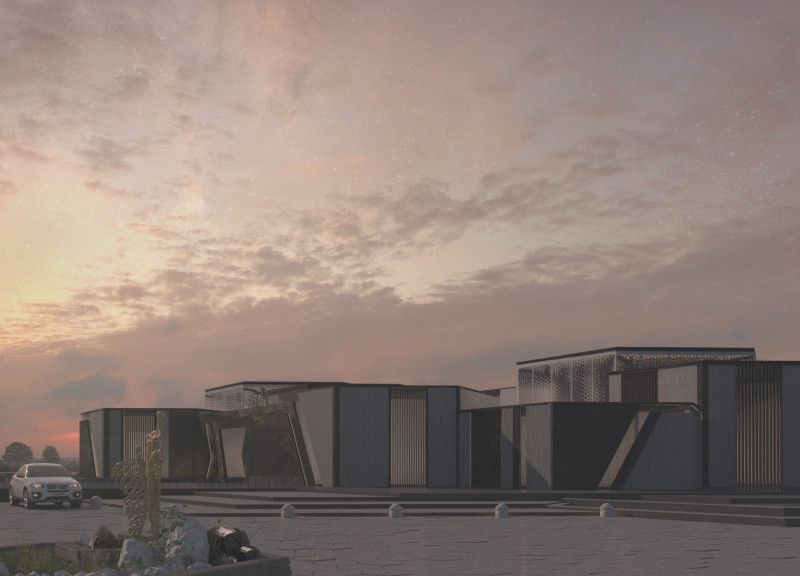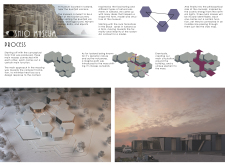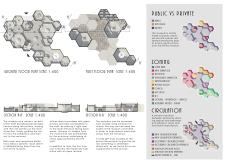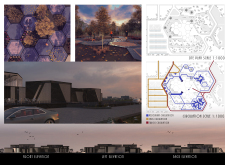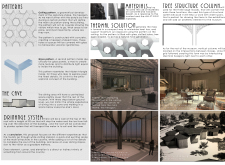5 key facts about this project
The SNIO Museum is located in Iceland, close to the Hverfjall volcano, and aims to serve as an important center for cultural and geological tourism. It showcases the unique features of Iceland’s natural history while offering exhibition spaces that highlight the country’s rich cultural significance. The design features three interconnected masses, each with a specific purpose, creating a unified structure that fits seamlessly into its natural surroundings.
Architectural Concept
The overall layout consists of three main masses organized in a compact way. This configuration minimizes heat loss, which is essential in Iceland's cold climate. By prioritizing energy efficiency, the design promotes sustainability while ensuring that the building harmonizes with the surrounding landscape. The project draws inspiration from local geology, reflecting the natural rock formations and volcanic activity characteristic of the area.
Circulation and Spatial Organization
Inside the museum, the layout is designed for easy navigation and accessibility. Public spaces are prioritized, while private areas are strategically positioned to ensure effective operations. Visitors enter through a well-defined reception area that provides direct ticketing access. This design minimizes crowding and enhances the flow of people as they explore the exhibitions and facilities.
Material Considerations
The choice of materials plays a crucial role in the building’s identity. Concrete and volcanic basalt are used prominently throughout the design. Concrete provides a strong framework that supports wide exhibition spaces, while volcanic basalt gives a natural texture that connects the structure to its environment. These materials not only ensure durability but also echo the unique landscape of Iceland.
Design Details
Unique features contribute to the visitor experience, such as a magma path that guides movement around the museum. This concept symbolizes the geological forces that shape the region, linking the building directly to its natural context. An engaging roof pattern at the entrance invites visitors, drawing them into the museum and enhancing their connection to the surrounding landscape.


